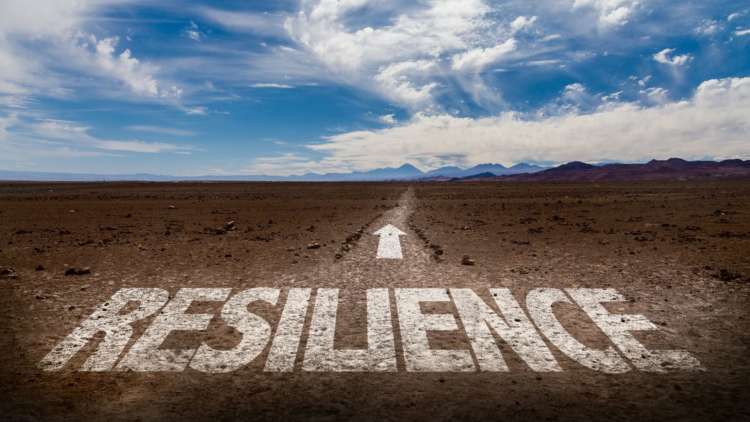Investing
Investing for Infrastructural Resilience

Today, the concept of resilience is applied in a range of contexts from ecology and disaster management to cyber security and engineering. The notion of resilience has been at the forefront of discussions around the global post-Covid-19 recovery and our collective efforts to build back better.
For impact investors, this means directing our capital allocation and stewardship activities towards solutions that can drive systems change and transformation. At Tribe, we divide our range of resilience-based investment opportunities into three categories: infrastructural, planetary and human resilience.
In this article, we focus on Infrastructural Resilience. The investments are designed to strengthen our man-made environment and improve its capacity to withstand the various potential social-ecological disruptions on the horizon.
DIGITAL INNOVATION
Digital technology and software has the unique ability to support the delivery of all 17 UN Sustainable Development Goals (SDGs). Digital technologies increase our capacity to connect and communicate, supporting engagement with political, educational, healthcare, and other welfare-based systems.
Moreover, digital innovations like Artificial Intelligence (AI) enable us to monitor and understand with greater clarity the changes unfolding in the world around us, so that our responses can be more targeted and precise. The rise of smart, connected devices and big data capabilities allow us to analyse and optimise our resource use, bringing significant efficiency benefits. Digital technology and software are also a critical element of crisis management, as we have witnessed during the Covid-19 pandemic with the successful shift to remote working for many.
SUSTAINABLE CONSTRUCTION
Our conventional modes of construction are set for reimagination as buildings currently account for roughly 39% of global energy-related carbon emissions as well as significant volumes of water and material consumption. Numerous initiatives have been developed to promote the delivery of resource efficient buildings and refurbishments.
Technologies like high performance insulation, natural ventilation and heat recovery systems, natural daylighting systems, greywater recycling and onsite renewable power generation, can be used to significantly reduce the operational resource footprint of buildings. Digital innovation also has a role to play in smart energy and water management systems which can drastically improve resource efficiency.
Buildings made from conventional building materials, like cement and concrete, also account for significant amounts of embodied carbon. A wide range of bio-based, renewable and recyclable materials show promise as alternative building materials, from bamboo to seaweed. These alternative materials are effective at locking in sequestered carbon and supporting biodiversity during their growth.
CLEAN AND RENEWABLE ENERGY & TRANSPORT
There are infrastructural shifts in support of renewable energy generation and low-carbon transportation which will be critical enablers of cross-sectoral decarbonisation, to bring us in line with the 1.5°C warming goal outlined in the Paris Climate Agreement.
Renewable energy generation allows us to move away from pollutive fossil fuels and instead power our lives and economies in a cleaner, more affordable way. Renewable energy sources continue to prove increasingly cost-effective and efficient across a range of technologies, including solar PV, onshore and offshore wind and geothermal power. Moreover, advances in battery energy storage and smart grid technologies show promise for improving efficiency and balancing out the intermittency issues inherent in harnessing natural elements like sunshine and wind.
The electrification of the transport sector is another essential infrastructural shift, and one that relies on affordable and reliable access to renewable power in order to deliver decarbonisation benefits alongside reductions in ambient air pollution. Innovations in vehicle-to-grid technology highlight the potential for electric vehicle batteries to help balance out power supply and demand while charging, which will enable the integration of more renewable power into the electricity grid. In addition to electrification, innovative fuels like green hydrogen could become feasible solutions for the decarbonisation of harder to abate transport sectors like shipping and aviation. Meanwhile, connected and autonomous vehicles could help to shift us towards a more efficient ride-sharing economy, while improving road safety and reducing air pollution.
This range of opportunities demonstrates the scope we have to truly build back better. Sourcing investments which drive change and improve efficiencies in our man-made environment is at the heart of our focus on Investing for Infrastructural Resilience

-
Business4 days ago
Mike Bahun and Fundraising University Make a Lasting Impact on Sports Programs Nationwide
-
Top Stories4 days ago
After VW plant victory, UAW sets its sights on Mercedes in Alabama
-
Investing4 days ago
Forex Market Trends to Watch Out For in 2024
-
Top Stories4 days ago
Hedge fund borrowing hits five-year peak, Goldman Sachs says







